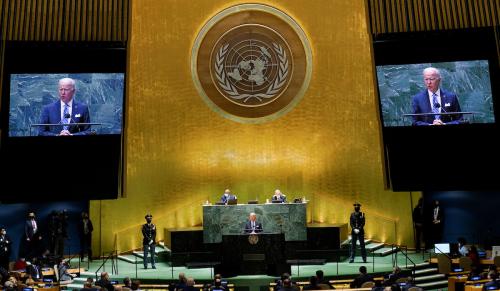In the State of the Union, President Obama proposed higher capital gains taxes, which fall primarily on the wealthy, to pay for a series of expenditures that would primarily benefit the middle class. These expenditures include lower taxes on families with two earners, an expansion of the child care tax credit, some funding for paid parental leave, and free community college.
Given the massive growth of inequality in the US in the past several decades, some redistribution from the wealthiest Americans to the middle class (and also the disadvantaged) should be welcome. Furthermore, these expenditures can also be considered good investments that will reward work and skill-building, as well as care for newborn or sick children. All of these will help make our economy more productive over time as well as more equitable.
But the devil can sometimes appear in the details, and we do not yet know many details, even after the speech. Regarding free community college, the president’s proposal (which was publicized earlier this month) is sensible in many ways. Students would only receive the tuition breaks if they enroll at least halftime and show adequate academic performance (defined as a grade point average of at least 2.5); these conditions will create incentives for stronger performance and completion among students. They would only be applied to programs that generate transfers to 4-year colleges or those with strong chances for a job afterwards – though it is not yet clear how this rule will be implemented. The president has also proposed a separate grants program to fund high-quality career and technical education in high-demand fields, like health care and health technology, which makes enormous sense.
Of course, most of the very scarce public dollars spent on free tuition will benefit the middle class rather than the poor, who already get Pell grants that cover tuition, but who are often in need of various other supports and services that they will not receive. Furthermore, such a policy would likely induce many students to begin their academic careers at community colleges and then transfer to 4-year colleges later, instead of starting at the latter right away. In turn, that higher education start could worsen their academic outcomes, as they will likely receive lower-quality instruction and less structured guidance at community colleges, while also risking unsuccessful transfers afterwards — indeed, it is at major transition points in academic pathways (such as transferring between a 2-year and 4-year institution) that so many students find their progress stymied, often leading to the low completion rates that we find in American postsecondary education.
Finally, if capacity at community colleges is constrained, such as physical seats in the classroom or qualified teachers at the front of it – as it surely is in the high-demand fields – then a sharp rise in attendance among middle-class students might well crowd out the disadvantaged students from these programs. Indeed, states that have implemented generous merit scholarships in their flagship universities, making attendance there virtually free for strong students, seem to encourage attendance among students who otherwise would have gone to elite private colleges, leaving less room for others who now face lower-quality options.
This is not a desirable outcome, either from the perspective of advancing equity or increasing national productivity. Thus, the community college proposal would be most sensible if it were combined with other proposals to expand teaching capacity in high-demand fields and to protect the needs of more disadvantaged students.
And, though I am broadly sympathetic to the President’s proposals, we should remember one other caveat: eventually we will need to deal with the explosion of retirement costs that will occur as Baby Boomers retire, which will almost certainly require both unpopular spending cuts and tax increases on the middle class.
But, in the meantime, a set of targeted proposals to increase equity in our economy, and to support work and skill development in the lower and middle classes, is desirable. Are there any takers on the other side of the aisle – or at least some alternatives that would accomplish the same goals?



Commentary
Op-edObama Right to Focus on Equity in SOTU but Proposals May Have Unintended Consequences
January 20, 2015